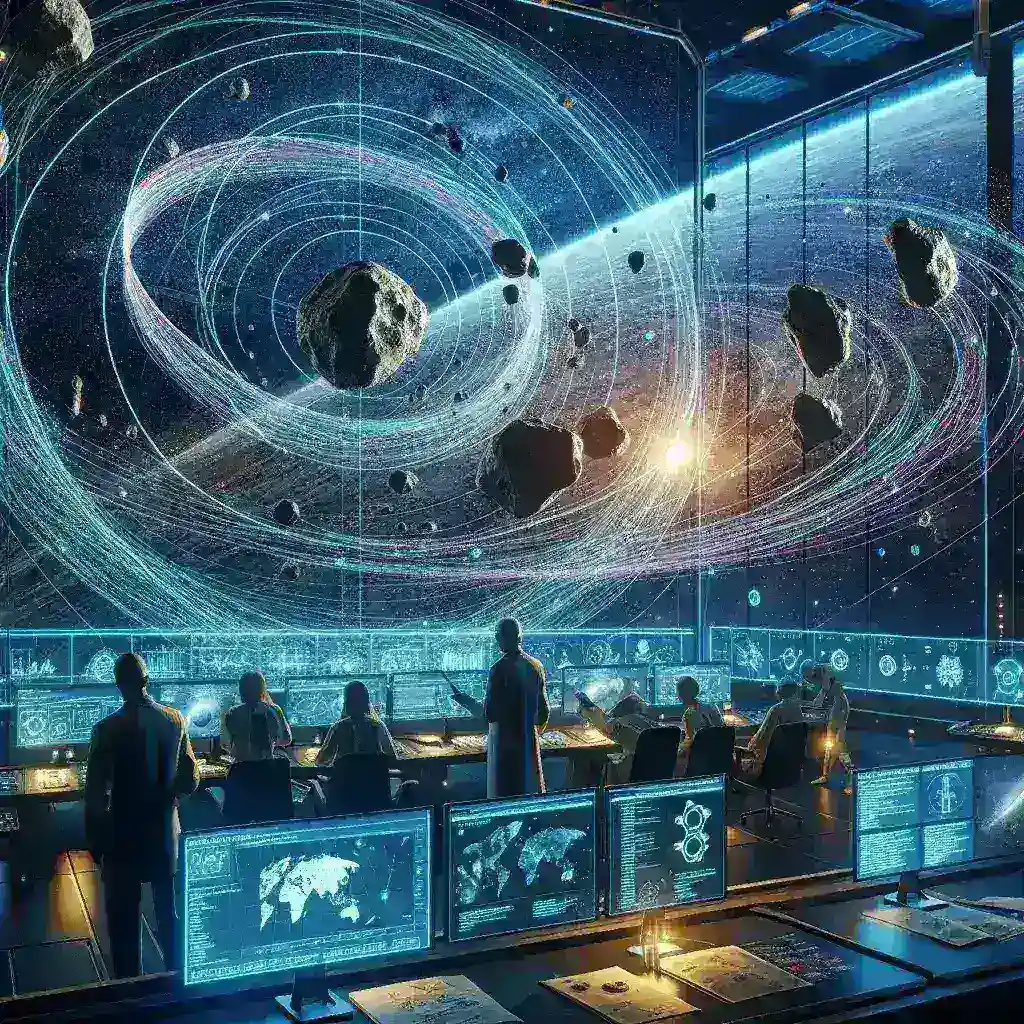
NASA Develops AI Models for Predicting Asteroid Trajectories
Introduction
In an era where technology accelerates scientific advancement, NASA has taken a formidable step in planetary defense by developing artificial intelligence (AI) models to predict asteroid trajectories. This breakthrough offers profound implications for our understanding of near-Earth objects (NEOs) and enhances our ability to mitigate potential threats. In this article, we will delve into the intricacies of this development, explore its historical context, evaluate future predictions, and discuss the pros and cons of using AI in space exploration.
The Importance of Predicting Asteroid Trajectories
Asteroids, remnants from the early solar system, travel through space and can pose significant threats to Earth. According to NASA, more than 25,000 NEOs are currently tracked, and understanding their paths is paramount for planetary defense. The consequences of an asteroid impact can be catastrophic, as evidenced by the Chicxulub impact that contributed to the dinosaurs’ extinction around 66 million years ago.
A Historical Context
The need for asteroid tracking gained momentum following several close encounters with Earth. Notably, the 2013 Chelyabinsk meteor, which exploded over Russia, underscored the potential dangers posed by these celestial bodies. In response, NASA established the Near-Earth Object Observations (NEOO) program to enhance detection and tracking efforts.
Traditional Methods vs. AI Models
Traditionally, astronomers utilized telescopes and manual calculations to determine asteroid trajectories. This method, while reliable, was often time-consuming and limited in scope. With the advent of AI, NASA scientists have developed advanced models that can analyze vast amounts of data more efficiently.
How AI Models Work
- Data Collection: AI algorithms gather data from various sources, including telescopic observations and historical trajectory data.
- Pattern Recognition: Machine learning techniques enable the models to identify patterns in asteroid movements and predict future positions.
- Continuous Learning: Unlike traditional methods, AI models can learn from new data, improving their predictive accuracy over time.
Future Predictions and Implications
The integration of AI into asteroid trajectory prediction not only enhances accuracy but also allows for timely warnings. As NASA continues refining these models, the potential for improved risk assessment increases. For instance, in 2021, AI models successfully predicted the trajectory of a small asteroid, demonstrating their efficacy in real-world scenarios.
Pros of AI in Asteroid Prediction
- Increased Efficiency: AI can process large datasets rapidly, providing quicker predictions than traditional methods.
- Enhanced Accuracy: Machine learning algorithms adapt and improve over time, potentially leading to more precise trajectory forecasts.
- Proactive Threat Mitigation: Accurate predictions enable early intervention strategies, such as deflection missions.
Cons of AI in Asteroid Prediction
- Data Dependency: The accuracy of AI predictions heavily relies on the quality and quantity of available data.
- Algorithmic Bias: If not properly managed, AI models may develop biases based on the data they are trained on.
- Public Perception: Miscommunication about the risks associated with NEOs can lead to unnecessary panic or complacency.
Real-World Examples and Case Studies
NASA’s AI models are not just theoretical constructs; they have been put to the test in real-world scenarios. For instance, the successful trajectory prediction of the asteroid 1998 OR2 demonstrated the potential for AI to enhance our understanding of celestial mechanics.
Expert Insights
Experts in the field of astronomy have lauded NASA’s efforts, emphasizing the importance of AI in revolutionizing asteroid tracking. Dr. Amy Mainzer, an astrophysicist at NASA’s Jet Propulsion Laboratory, stated, “AI allows us to handle the immense amount of data we’re collecting and make sense of it in ways that were previously unimaginable.”
Cultural Relevance
The fascination with asteroids extends beyond science; they have captured public imagination through films, literature, and art. As AI models become integral to our understanding of these cosmic visitors, they also shape cultural narratives about humanity’s place in the universe and our responsibility to protect our planet.
Conclusion
As NASA continues to develop AI models for predicting asteroid trajectories, the implications for planetary defense are significant. These advancements not only enhance our ability to detect and track NEOs but also pave the way for proactive measures to mitigate potential threats. By embracing technology, we are better equipped to face the challenges posed by asteroids and ensure the safety of our planet for future generations.




Leave a Comment